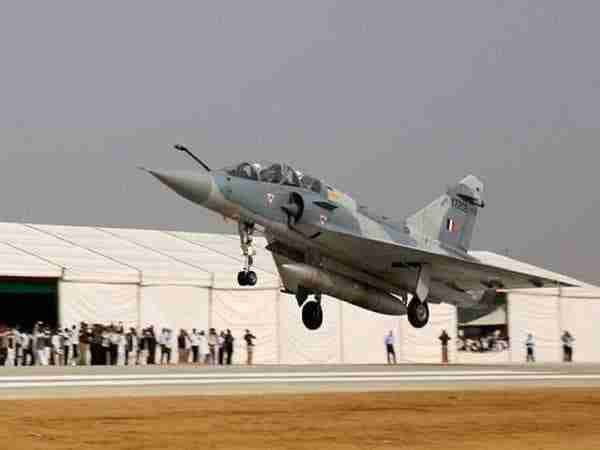A year later, looking back at Indian airstrikes on Pakistan and its impact
Since the Balakot strikes there have been no major Pakistan-led terror attacks. It seems that Pakistan is nervous that India’s actions this time aren’t going to be similar to its previous one.
A year after the IAF’s Balakot strikes there are perhaps more people in India (say about 15% of our population) that doubts if the strikes were ever done on the terror campus so deep inside Pakistan. For Pakistan, this has been a saving grace as it was first shocked at the audacity of India – to attempt those strikes – and after a mumbled admission by both their ISPR Spokesman and Masood Azhar’s brother they went into denials, and even carried out the pretence of an air attack on Indian posts at LoC. Had India not effectively carried out the Balakot strikes, why would the Pakistani air armada of F-16s and JF-17 have been used? Was it to nudge India further into going to a war, as if the Pulwama attack wasn’t enough of an aggravation? It thus defies logic, except that Pakistan wanted to show that it can respond, even though its airforce and air defence system was caught napping!
Even then, as Pakistan had responded a day later, it made a failed attempt to hit at Indian military positions across the Line of Control. Moreover, the confusion and contradictions in the Pakistani statements, that followed the audacious Indian airstrikes on terror camps in Pakistan, does confirm to any astute observer of Pakistan, that its boastful military establishment, had completely been caught off-guard. In fact, the airstrikes by the IAF had even taken most keen observers of Indo-Pak military capabilities – and their existing options – by complete surprise. For decades now India had adhered to the self-imposed restriction of not using air power even to target terrorist camps and launch pads across the Line of Control (LOC) in Pakistan occupied Kashmir (PoK).
In 1999, then-PM Atal Bihari Vajpayee had laid out his red line for the armed forces during the intensely fought Kargil conflict. And to that extent Mr Modi’s decision to allow India’s Air Force to hit Pakistani assets – where they least expected the long arm of India’s strategic punch to reach – is indeed a remarkably bold move, that is nothing short of a watershed moment in India’s battle against Pakistan-sponsored terrorism. This also leaves the window open to do so again, at another target, if Pakistan pushes for another terror strike in India.
What makes Pakistan even more nervous is that India’s responses aren’t going to be similar to those it has adopted previously, unlike the Pakistan army, that has repeatedly followed the virtually the same plans every time, by using irregular forces before they launched regular troops, all led by their army officers into India. They did so in the 1947 and 1965 wars and again during the Kargil conflict. They’ve done the same all these years in J&K in the hope that the ground will be readied for their regular troops to roll in. This was a plan that was modified by Gen Zia and named Op-Topac, which Zia had unveiled just before he died. It has become Pakistan’s longest-running military operation in J&K. It aims at the annexation of the Valley through an insurgency and its radicalisation backed finally by a military invasion!
But India has stood firm and with Pakistan’s campaign floundering in recent times with India’s proactive counter-insurgency campaign, the suicide attack at Pulwama was an attack to put Pakistan’s proxies back into the narrative in J&K.
However, the Indian airstrikes on Balakot had at least two firsts to its credit. It is perhaps the first time that a nuclear-armed country has resorted to the use of airpower at targets in the territory of another nuclear-armed country. The other is the downing of a Pakistani F-16 fighter by a vintage 1960s model MiG-21 fighter. This has stunned the West and the US arms lobbies that want to push India into a deal to buy upgraded F-16s. Hence the silence or denials about the F-16s being used by Pakistan despite restrictions on their use by the US, in the face of the damning display of fallen F-16-(only)-compatible missile parts by the IAF. More importantly, India’s airstrike has blown a hole into the Pakistani article of faith, that their nuclear arsenal was both a protective shield against any Indian adventurism and the belief that their nuclear umbrella allowed them to push terrorists into India and use their so-called ‘Jihadi’ soldiers to keep India on the back foot, while their army strutted about their country as the ‘guardians of the state’. And in India, this blackmail had held out for three decades even after thousands of Kashmiris and Indian soldiers had become victims of Pakistan’s ‘proxy war’ to wrest the Kashmir valley away from India.
In the mid-1980s Pakistan’s military establishment led by General Zia-ul-Haq had concluded that it was impossible for Pakistan to win a conventional war against India or even to ‘liberate’ parts of Jammu and Kashmir to fulfil their long-standing ambition to avenge their humiliation following the fall of Dhaka and the large scale surrender of the Pakistan Army before the Indian forces. The idea was that the only other way Pakistan could “do a Bangladesh” on India was to go beyond the established military narrative of fighting a conventional war like the 1965 and 1971 wars. The answer thus lay for Pakistan and its military establishment in making India bleed through cross border terrorism, and by telling India and its leadership that if India’s military response did push Pakistan into a corner, then Pakistan wouldn’t hesitate to use its neckwear bombs.
And the assumption that China would come out in support of Pakistan if India were to initiate military action – after having exhausted all other diplomatic, economic and geopolitical options – is again misplaced. Yes, China has made major investments in Pakistan through the CPEC and in Gwadar port plus a few large dams on the Indus in the northern areas of PoK, but China has always been careful not to go against international opinion, beyond a point, unless it’s own agenda is challenged, as in the South China Sea region. No wonder it has now given its consent to a UNSC admonishment of Pakistan and its terror apparatus. China, we know, did not intervene in Pakistan’s favour either during the 1965 & 1971 Indo-Pak wars or during the Kargil conflict. It has its own strategic goals and the biggest one is to be a great power on par with the US.
There is thus reason to believe that Delhi’s reluctance to respond with military force either after the Jaish-e-Muhammad attack on the Indian Parliament in December 2001 and the massive military mobilisation thereafter, or the Lashkar-e-Toiba attack on Mumbai in November 2008, had further emboldened Pakistan’s military hawks. Had India responded earlier on similar lines as it recently did after the Pulwama attack in February last year, with at least air strikes on Pakistan’s terror machinery at in the PoK (since all of J& K – including PoK, is technically and legally Indian territory), Pakistan would have had to rethink its strategy of using terrorism as an extension of its foreign policy.
For Pakistan, the annexation of Kashmir, through whatever means, is its long-standing ambition, an article of faith and a binding adhesive for a country that is so deeply rooted and doctored in anti-india narratives that now nothing short of the absorption of the Kashmir Valley into Pakistan will be acceptable to its public anymore. But more than the Kashmiris itself it is the waters of the Indus and its rivers and its tributaries that are the real prize that Pakistan’s policymakers have their eyes on. Pakistan is hugely dependent on the waters of the Indus rivers system and recognising this vulnerability, Pandit Nehru had struck a heavily one-sided Indus Waters Treaty with President Ayub Khan of Pakistan in September 1960. It gives Pakistan 80% of the waters of Indus and its rivers, and India strangely hasn’t even effectively used the 20% of its waters that it was promised. Thus following the Pulwama attack, the Indian government has finally announced its intentions to at least do that, hoping this might put pressure on Pakistan to mend its ways.
A slew of options – currently diplomatic and riparian – have been announced and the military option is still on the cards in the event of another Pakistan-led terror attack. But those who suggest that either side could press their nuclear button and annihilate the other with nuclear weapons, show how little they know about how wars are fought and when – if at all – nuclear weapons are used. In fact, with the exception of the bombings of Hiroshima and Nagasaki by the US at the end of World War-II, the study of nuclear warfare is based on the study of the non-use of nuclear weapons.
But neither the Indian air strikes nor pressure such as the threat of pulling out of the Indus Waters Treaty will be able to immediately discipline Pakistan. Islamabad’s weakest pressure point is its current economic plight, and it is looking for financial bailouts from the IMF – the prospects of which have been badly hit due to its presence on the FATF ‘grey list’.
Only three countries really enjoy leverage over Pakistan – the US, China and Saudi Arabia. They all have strong ties with Pakistan’s military establishment, which is the main culprit in creating, nurturing, and sponsoring terrorism against India as also in Afghanistan and Iran. Thus the Indian diplomatic drive against Pakistan must seek to stall any aid to this rouge state and convince the world to tighten the noose against Pakistan’s generals and all their vested interest in their country and abroad, like in the US and UAE. Unless that is done with sufficient vigour, Pakistan’s generals like those of Myanmar would continue to prosper, while their country slides deeper and deeper into a dark hole. And India alone cannot do that even if it resorts to another set of airstrikes.
Since the Balakot strikes there have been no major Pak-led terror attacks. It seems that Pakistan is nervous that India’s actions this time aren’t going to be as placid as its previous one, but instead even more damaging to Pakistan’s standing. Remember, Pakistan’s army fears humiliation more than defeat!


